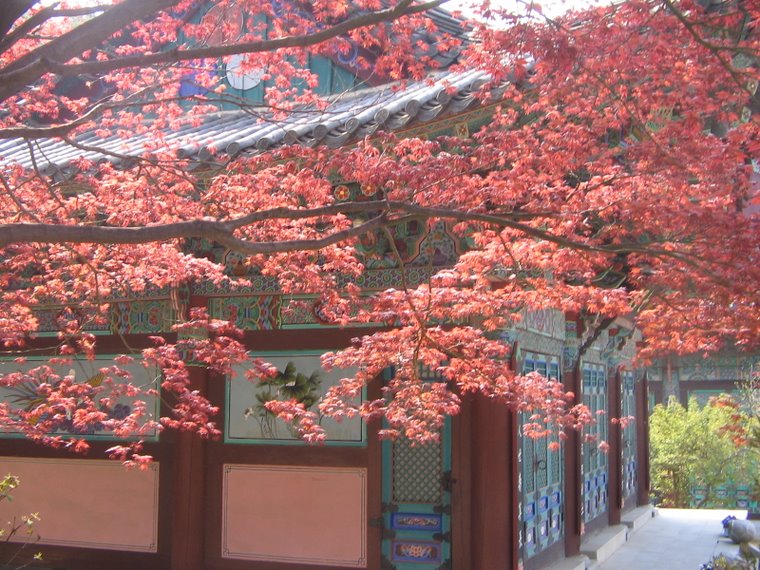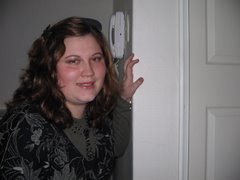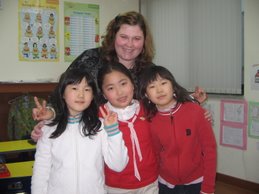
On Saturday, I went with my friend Gillian from Australia and Grace from Korea to the Oeamri living folk village in Asan.

Asan is the town next to Cheonan city. We were lucky enough to get a ride with Grace in her car. Bonus!

Despite the chilly weather (evident in the frozen water in the stream!), it was a beautiful day to be outside and appreciate traditional Korean architecture and way of life.

The Folk Village is interesting because it has preserved its traditional way of life. Most Koreans live in the fast-paced rat-race cities, but they still remember their roots and culture at places like the Folk Village.
The quaint straw-and-wood bridge leads to a village of about 50 straw houses (belonging to peasants) an 10 tiled houses (with Oriental-style "giwa" roofing) belonging to the nobility class which is called the "Yangban" in Korean.

It is called a "living folk museum" because local residents still live in many of the houses (although storming into their homes to take photos is discouraged!)
So I tried my hand at some traditional Korean games, and pounding rice with a giant mortar and pestle.

The village is located just under Seolhwasan mountain, which provides a lovely, rustic backdrop. Water flows around the village in artificial waterways, which provide water to the houses. I tried preparing cloth for a blanket by pounding on it (photo below), but this seemed like much too much work for a good night's sleep!

The folk village is also a popular location for Korean movies and TV-series, which use the houses and gardens as backdrop. You can imagine princess and princesses relaxing on the raised platform, and servants chattering in their quarters at the back of the house.










2 comments:
^^Hello Jenni teacher~~~
Ha Ha Ha
Bye-bye
Na-Hyun
Hi Jennifer,
It's great to read (in english) from someone who has travelled to Asan as there is very little info on the web.
I'm trying to find some helpful websites about accommodations in Asan and was wondering if you happen to know of any. I'm looking for budget/motels/guest houses.
Thanks.
Post a Comment